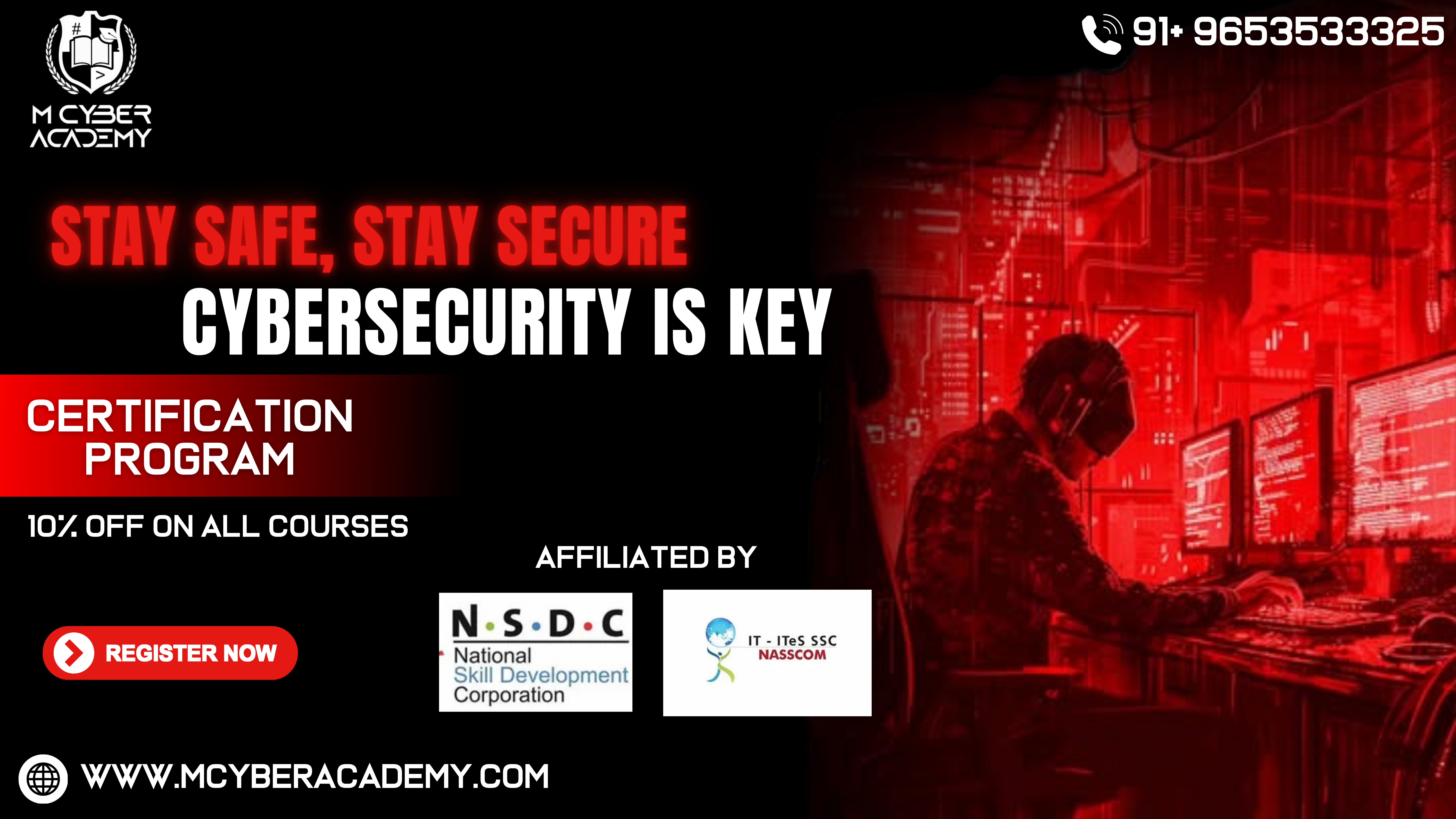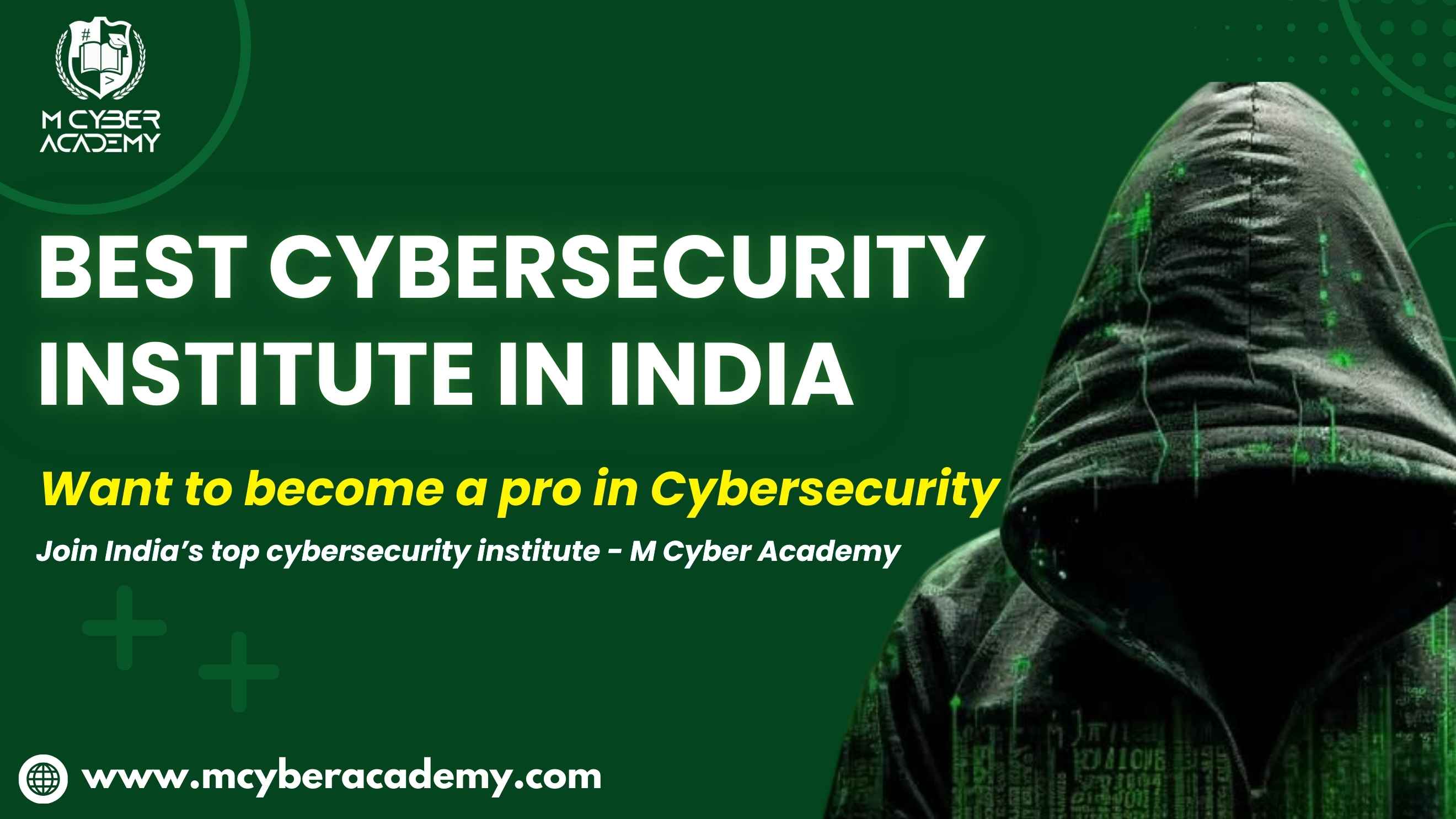
What is Cybersecurity?
"Learn what cybersecurity is, the best practices, and the types of cyber threats. Join the top cybersecurity institute in Delhi or Gurugram to enhance your skills and tackle real-world threats."

What is Cybersecurity?
Cybersecurity is the practice of protecting computer systems, networks, and data from digital threats such as hacking, malware, and unauthorized access. It safeguards sensitive information, prevents attacks, and ensures the reliability of systems. The key elements are network security, data protection, application security, and incident response. The purpose is to ensure that information remains confidential, integrity is maintained, and availability is guaranteed.
What is cybersecurity all about ?
Cybersecurity is the practice of protecting digital systems, data, and networks from cyber threats such as hacking, malware, and unauthorized access. It relies on three key elements:
_ People _: Training and awareness to ensure individuals follow security best practices and recognize potential threats.
_ Processes _: Establishing guidelines, policies, and protocols for managing risks and responding to security incidents.
_ Technology _: Implementing security tools and systems like firewalls, encryption, and antivirus software to protect against cyberattacks.
Why is cybersecurity important?
Cyber security is the process meant to protect sensitive data and systems from cyber threats such as hacking, malware, and data breaches. It protects personal, financial, and business information from identity theft and fraud; otherwise, there is a loss of intellectual property, and organizations and individuals become vulnerable to huge financial and reputational losses without due security measures in place.
This will ensure continuity in business through prevention of cyberattacks and building trust with the customers. This will also ensure legal and regulatory compliance with data protection requirements, helping businesses avoid penalties. In this digital world, maintaining a safe and secure online environment requires good cybersecurity. Learn cybersecurity the right way by joining the top cybersecurity institute in Delhi. Gain practical skills, expert knowledge, and hands-on experience to tackle real-world cyber threats with confidence

Types of Cybersecurity Threats
Some common forms of threats against individuals, businesses, and governments include:
-
Malware: It refers to the malicious programs designed to affect a system adversely and damage data. This category is divided into different types like viruses, worms, trojans, among others..
-
Phishing: Phishing refers to attempts made in the form of sending emails and accessing websites in an attempt to make the users give out passwords and credit card information.
-
Ransomware: Malware locks a victim's files and threatens to not reopen access unless paid for with often cryptocurrency.
-
Man-in-the-Middle (MitM) Attacks: Attackers intercept and tamper with two-party communication where the intent usually is to commit fraud or extort sensitive
-
Denial-of-Service (DoS) Attacks: In cyberattacks involving a flood of traffic over an area of concern that prevents authorized access to the target.
-
SQL Injection: This is a technique where attackers inject malicious SQL code into input fields to gain unauthorized access to databases and steal or manipulate data.
-
Insider Threats: Security breaches caused by employees or individuals with authorized access to a system, either maliciously or due to negligence.
-
Zero-Day Exploits: Attacks that target vulnerabilities in software or systems that are unknown to the vendor and have no available patch or fix.
The threats are constantly changing, so proper cybersecurity practices have to be upheld to defend against them. A cybersecurity institute in Gurugram can help you stay updated with the latest security measures and equip you with the skills needed to tackle evolving cyber risks
Best Practices for Cybersecurity
The best practices for cyber security to guard systems, data, and networks are:
Use a strong, unique password: Strong passwords are very complex, a combination of alphabets and numbers and alphabets, and symbols and should not be used in various accounts. This can be avoided using a password manager to store securely and manage.
Enable Multi-Factor Authentication (MFA): Require a second form of identification, such as a code sent to your phone in addition to your password. Keep Software Updated: Install updates for operating systems, software, and applications regularly to protect against vulnerabilities and newly discovered threats.
Install and regularly update firewalls and antivirus programs to prevent malware, ransomware, and other malicious attacks.
Backup important data regularly to external storage or cloud services so that if there is an attack, like ransomware, or the system fails, it will not be lost.
Keep control on email and hyperlink clicks: NEVER click on email link or opening any attachment; most phishing arrives via email therefore validate the origin of content in the email
Control access rights and permissions through least privilege policies; only add necessary permissions or access to achieve work objectives which minimizes compromise in case your account is captured.
Encrypt Sensitive Data: Encrypt both data in motion, when the data is on the move in the networks and at rest on the devices. Train Employees and Educate Employees: Train them to be inculcated with security best practices, make them aware about phishing, what constitutes suspicious behavior. Human beings are often weak in cybersecurity and have been involved in most of these cyber attacks and incidents. Ensure Incident Response Plan: Prepare for an attack by being ready with an incident response plan. In doing so, the team will identify, contain and recover quickly about security breaches.
Learn cybersecurity in a meaningful way by enrolling in the best cybersecurity institute in Gurugram. They offer practical knowledge, hands-on experience, and expert guidance to help you understand and tackle real-world cyber threats effectively